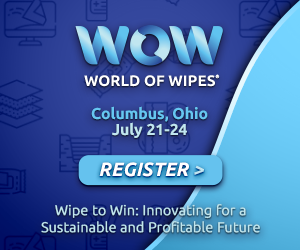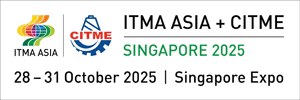AATCC’s Textile Testing Demonstration is Back for Functional Fabric Fair Spring

PORTLAND, O.R., USA, March 28, 2025 – AATCC has recently introduced a new feature during the Functional Fabric Fair Portland show. Last year, AATCC brought two iterations to the spring and fall Functional Fabric Fair shows, the AATCC Testing and Standards Exhibition and the AATCC Textile Test Zone. In the exhibition, attendees participated in live demonstrations of textile testing to better understand lab testing. Attendees thoroughly enjoyed interacting with the various components to learn more about textile testing and how it relates to other aspects of the product development process.
AATCC is once again bringing this exhibition back to the show floor during the Spring 2025 show in April. The AATCC Textile Test Zone features the following stations: Color Acuity & Viewing Environment, Color Fastness, Laundering, Assessments After Laundering, and Moisture Management & Water Resistance Testing.
Color Acuity & Viewing Environment
To ensure accurate color assessment, it is vital to thoroughly test visual capabilities. Maintaining color vision expertise is critical to providing reliable, data-driven insights to your customers. Explore tools for color acuity such as the Farnsworth-Munsell 100 Hue Test and the Pseudoisochromatic Plates used for a Color Blindness assessment. Evaluate the impact of lighting on color proficiency with more specialized measurement tools such as a Simultaneous Color Viewer for side-by-side comparisons. Match fabric swatches to Gray Scales for Staining or Color Change to see how they compare.
Color Fastness
Colorfastness testing stands at the forefront of textile quality assessment, evaluating a fabric’s ability to maintain its color integrity under various challenging conditions. It is a critical requirement for most textile products, especially those intended for clothing, recreation, uniforms, and personal protective equipment. Visualize how a Rotary Crockmeter can aid in evaluating color transfer when textiles are under mechanical friction. Check out samples of fabric that have been through a Scorch Tester to witness the impact of heat on colorfastness.
Laundering
Laundering is an important part of the lifecycle for many textile products. Laundering can impact the size, shape, color, and smoothness of textiles. Explore the variables in the laundering process—and how to control them. Get to know the specialized test methods and tools that ensure dependable results and good approval decisions. Plus, find out how AATCC detergents and test methods support your sustainability initiatives.
Assessments After Laundering
Dimensional Stability and Appearance Testing
Dimensional stability and appearance of your textile products are important performance characteristics. Check out how to properly evaluate these features and get acquainted with the tools for proper evaluation, including Shrinkage Scales, and Shrinkage and Skew Rulers. Find out the options for properly evaluating smoothness, wrinkles, and creases. By conducting these and other standardized tests, you can confidently verify your textiles exceed customer expectations for dimensional stability and appearance.
Stain Testing
To thoroughly assess the stain and soil resistance of textiles, AATCC offers several test methods. Take the opportunity to review the stain resistance for carpet and household soils. These assessments demonstrate textiles’ ability to maintain their clean, vibrant appearance even when exposed to real-world stains and soils.
Fiber Fragment
So-called “microfibers” are tiny fragments making big news. These fiber fragments can break off or come loose from textile yarns and fabrics during production, use, and laundering. Fiber fragments find their way to waterways, remote mountaintops, and human tissue. AATCC provided the first textile standard for quantifying this problem as a first step in addressing this in home laundering— AATCC TM212. Come to the Test Zone and get hands-on practice with the l test apparatus for measuring fiber fragment release in laundering.
Moisture Management and Water Resistance
Many textile products claim water repellency, water resistance, or other moisture management properties. Impact penetration and spray testing are critical components of comprehensive moisture management evaluations in textile performance. These advanced testing techniques simulate real-world environmental and mechanical challenges that fabrics may encounter, providing critical insights into material durability and protective capabilities. Put fabric samples through a Spray Tester to visualize how fabrics are rated for water-repellent finishes. Compare how fabrics perform under an Impact Penetration Tester to evaluate water resistance or water repellency.



